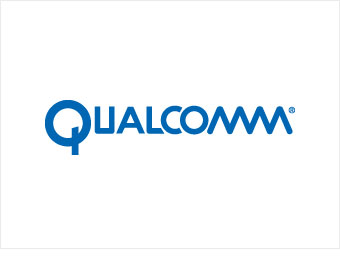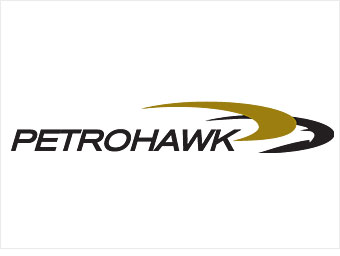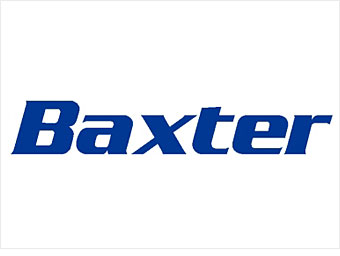
MasterCard CEO Robert Selander at headquarters in Purchase, N.Y.
Ticker: MA
Market cap: $30 billion
2008 revenue: $5 billion
P/E ratio: 18*
Dividend yield: 0.3%
For a consumer-dependent company like MasterCard, 2009 was a year of surprisingly solid results.
Amid the worst economy since the Depression, MasterCard not only eked out a 1% revenue rise in the first three quarters (because consumers used debit cards more) but also boosted operating profits 24% (by raising fees and taking a machete to marketing costs).
That's what happened when consumers weren't spending. Now there are signs that wallets may be ready to open again.
One key measure -- the gross value of MasterCard's transactions -- has stopped falling (when calculated in local currencies). That means MasterCard's revenue is poised to climb, analysts say.
Like its rival Visa, MasterCard acts as a middleman, collecting pennies from every transaction on its network. Unlike the banks that issue credit cards, it doesn't hold risky consumer loans (and it shouldn't be affected by a new law limiting the penalty fees that banks can impose).
With an estimated 725 million people using its services, MasterCard is benefiting from the long-term switch to plastic. The number of sales using a MasterCard has actually increased during the recession.
With the company's success, it's little surprise that shares have run up from $119 (when investors panicked, in the belief that consumers would never spend again) to $230.
But at 18 times next year's estimates the stock is actually well below its historical forward P/E of 27. Even without a worldwide recovery, argues J.P. Morgan analyst Tien-tsin Huang, the stock price can rise as more people use its cards. If total dollar volume increases in 2010 -- and most analysts believe it will -- MasterCard will earn more.
"You're starting to see signs of a recovery," says Huang, "but if things stay bad, they should be able to grow through that." Earnings per share are expected to rise 18% next year as sales increase by 9%.

Ticker: AMED
Market cap: $1.1 billion
2008 revenue: $1.2 billion
P/E ratio: 7.4*
Dividend yield: none
The stocks of even the best health-care companies suffered during a tumultuous year of reform debates and tea parties.
Amedisys was no exception. Its shares slid by 9% this year even as its profits grew 63% in the first three quarters of 2009. This despite the fact that its business -- providing nurses for patients in their own homes and running hospices -- is part of a sector projected to nearly double to $51 billion by 2016.
Investors were spooked by Amedisys's reliance on Medicare reimbursements, which provided nearly 90% of the company's revenue last year and are likely to be reduced in any version of health-care reform.
The company's gaudy 32%-a-year earnings growth over the past five years should ease to a modest 3% increase next year.
But the shares have been unduly punished: After trading at around 18 times earnings over the past five years, the stock has been pounded, reducing its P/E to 7.4.
"There will be a huge increase in the stock price just by resolving the uncertainty," says Mustafa Sagun, chief investment officer at Principal Global Investors, one of Amedisys's largest shareholders. "The market is trading as if earnings will be cut in half."
Moreover, the fear is based on the worst-case scenario in the House of Representatives' bill, says Michael Wiederhorn, an Oppenheimer analyst, and those provisions are likely to be moderated after the Senate gets its say; Medicare cuts for providers like Amedisys may even be delayed because home care costs less than hospital stays.
With an aging population ever more in need of its services, Amedisys seems poised to thrive, and its shares should recover, no matter what happens in Congress.

Ticker: QCOM
Market cap: $75 billion
2008 revenue: $10.4 billion
P/E ratio: 20*
Dividend yield: 1.5%
Qualcomm's technology is already ubiquitous. An estimated one-third of the world's cellphones have Qualcomm chips in them, and the company earns royalties on nearly every phone made for fast-growing 3G networks. But as the industry prepares for a new surge, Qualcomm is primed to mint money.
Apart from booming smartphone sales, this was a lackluster year for the mobile phone industry. Consumers worldwide waited to upgrade to data-friendly 3G networks from older 2G networks; as a result, 2009 phone sales are on track to slump by 13%.
But analysts expect people to start buying phones again as the world economy stabilizes. Markets like China, India, and Eastern Europe still operate on slower 2G technology, which will be upgraded.
Qualcomm CEO Paul Jacobs recently said he expects the Chinese 3G handset market, for instance, to grow nearly ninefold over the next four years. By 2013, 3G subscribers are expected to reach 2.4 billion people from 830 million today -- and Qualcomm will earn $4 to $8 on each new phone.
With some 11,000 U.S. patents, Qualcomm earns the majority of its profits through its licensing business, where margins average 85%. Those juicy margins explain why a 7% increase in revenue next year is expected to translate to a whopping 98% jump in earnings per share.
And Qualcomm boasts a pristine balance sheet with no debt, which should protect its dividend (a 1.5% yield).
Qualcomm shares have bounced back of late -- but only to 20 times next year's earnings, in line with its historical multiple. That ignores the company's growth potential.
Even if worldwide phone sales don't increase, Qualcomm can improve its market share. It recently resolved a patent dispute with handset giant Nokia and signed a licensing contract with Samsung (which paid $1.3 billion upfront to use its patents for 15 years) after years of haggling. There's another benefit to clearing up the litigation.
"That had kept a cloud over the stock," says Deutsche Bank analyst Brian Modoff, who expects shares to reach $56 in 2010. "You want a company that can control its own destiny and beat numbers even if the market doesn't improve. This is one of them."

Ticker: HK
Market cap: $6.3 billion
2008 revenue: $1.1 billion
P/E ratio: 30*
Dividend yield: none
When Petrohawk, an oil and gas exploration and production company, formed in 2003, analysts assumed that it was conceived as an acquisition target.
Petrohawk's CEO, Floyd Wilson, had already built and sold two other energy outfits, so it seemed likely that his new venture would be on the bidding block soon enough.
But about 1 1/2 years ago it found a way to tap the Haynesville Shale, a lucrative natural-gas play that until then had been too difficult to access. Petrohawk now controls more than 300,000 acres of land on top of the gas field and has throttled up production.
"I don't see this company being sold anytime soon," says John Freeman, an analyst at Raymond James.
Petrohawk isn't alone in discovering big new fields of late -- one reason gas prices have plummeted. But it stands out for its efficiency and for the fact that its production costs are low.
As a result, Petrohawk will stay profitable even if gas prices fall further, says Scott Glasser, manager of the Legg Mason ClearBridge Appreciation Fund, which owns Petrohawk shares: "You've got above-average production growth combined with low costs." (Petrohawk has also protected itself with hedges through next year.)
Many producers, burdened by higher costs, have responded by trimming production. Petrohawk, by contrast, hopes to boost output by 43% in 2010.
To hit that target the company plans to spend $1.5 billion next year, up 32% from this year. That's an ambitious goal, exceeding Petrohawk's projected cash flow by $900 million, and some investors fear the company will issue more shares to raise capital (something it has done in recent years).
In November, however, CEO Wilson announced plans to divest a potential $1 billion in less important assets and swore off the notion of issuing new stock.
Petrohawk still trades at a premium: 30 times next year's earnings, about a third higher than the mean in its sector.
Barclays analyst Jeff Robertson says it's well deserved. "Their premium reflects expectations," he says. "By far, they have the highest growth rates among small and midcap companies."

Ticker: BAX
Market cap: $33 billion
2008 revenue: $12.3 billion
P/E ratio: 13 *
Dividend yield: 2.1%
Like Amedisys, Baxter, which sells products ranging from drugs for rare blood disorders to IV tubes, wasn't immune to the pox on medical-related shares this year.
Its stock has limped to a 1% gain year to date, vs. 21% for the S&P, and its P/E of 13 is well below its 10-year average of 19.
Wyatt Crumpler, manager of American Beacon Large Cap Value Fund, which owns Baxter shares, says it has been unfairly lumped in with companies that could suffer if health-care reform passes.
"The whole sector has been tainted," he says. "Baxter is a key provider of services and is in a good competitive position. Government changes won't affect that."
Baxter makes a wide range of indispensable products, which are likely to prosper regardless of potential changes like cost cutting or increased generic drug use.
Moreover, Baxter currently garners 60% of its sales from outside the U.S., and Piper Jaffray analyst Matt Miksic expects significant growth in those regions.
The company aims at highly specific markets, generating dependable revenues from products such as syringes and dialysis systems, and from treatments for hemophilia.
That mix has led Baxter to deliver double-digit annual earnings growth over the past five years. CEO Bob Parkinson is confident enough that he recently predicted profits will increase by 11% to 13% annually over the next five years.
They may rise even higher: Baxter has a deep pipeline of innovative products, including an antibody replacement therapy, IVIG , that is being tested as a treatment for Alzheimer's.
If that succeeds, it will be a "game changer," says Leerink Swann analyst Rick Wise. Vaccines also offer potential, he says. "They're one of the few companies that could be a major player there."
Next quarter, Baxter expects to reap more than $30 million in profits from its swine flu vaccine, Celvapan -- a shot in the arm for the bottom line.
0 comments:
Post a Comment